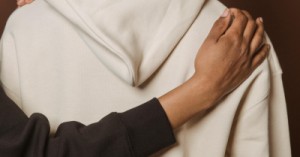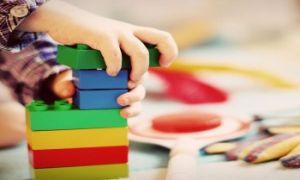Educators should never use a personal electronic device to photograph children, or record audio or visual images of children for any purpose, including to document children’s learning. The following article provides information on The National Model Code which addresses the use of service-issued electronic devices and personal electronic devices while providing children’s education and care, including taking images or videos of children.
The National Model Code
The National Model Code provides comprehensive guidelines for the use of electronic devices in early childhood education and care settings. Here’s a summary of the key points to help approved providers and their services incorporate these guidelines into their policies, procedures, and everyday practices:
National Model Code, Part 1
Only service-issued electronic devices should be used when taking images or videos of children while providing education and care. The appropriate use of service-issued electronic devices for taking, sending and storing images or videos of children should be clearly outlined in policies and procedures.
National Model Code, Part 2
Personal electronic devices that can take images or videos (such as tablets, phones, digital cameras, smart watches) and personal storage and file transfer media (such as SD cards, USB drives, hard drives and cloud storage) should not be in the possession of any person while providing education and care and working directly with children. Any exceptions to this should be for limited, essential purposes that are authorised in writing (or through another means if written authorisation is not reasonably practicable) by the approved provider at the service, and where that access does not impede the active supervision2 of children
National Model Code, Part 3
Essential purposes for which use and / or possession of a personal electronic device may be authorised for purposes other than taking images or recording videos of children include:
- communication in an emergency situation involving a lost child, injury to child or staff member, or other serious incident, or in the case of a lockdown or evacuation of the service premises
- personal health requirements, e.g. heart or blood sugar level monitoring
- disability, e.g. where a personal electronic device is an essential means of communication for an educator or other staff member
- family necessity, e.g. a worker with an ill or dying family member
- technology failure, e.g. when a temporary outage of service-issued electronic devices has occurred
- local emergency event occurring, to receive emergency notifications through government warning systems, for example, bushfire evacuation text notification
National Model Code, Part 4
Approved providers and their services should have strict controls in place for the appropriate storage and retention of images and videos of children
Oversight, Control, and Access to Images
Approved providers need to be vigilant and have oversight and control of who has access to images of children. This includes:
-
Accessing Images and Videos: Control access within the service, including staff accessing digital and hardcopy files, and the movement of these onto unapproved or unmonitored devices and platforms.
-
Online Posting: Monitor images, videos, and content posted online, whether through applications for sharing with families or for promotional purposes.
-
Inappropriate Sharing: Ensure images, videos, or content are not inappropriately posted online or shared through other applications not intended for sharing with families.
-
Regular Monitoring: Regularly monitor the use of service-issued electronic devices to ensure they are being used appropriately.
-
Device Monitoring: Implement procedures to monitor the use of devices at the service, ensuring educators do not use personal electronic devices for taking images or recording videos and communicating with families and carers.
Implementing the National Model Code
-
Service-Issued Devices: Ensure only service-issued devices are used for taking images or videos of children.
-
Policies and Procedures: Develop and implement clear policies and procedures regarding the use of service-issued devices.
-
Oversight and Control: Maintain strict oversight and control over who has access to images and videos of children.
-
Regular Monitoring: Regularly monitor the use of service-issued devices to ensure compliance with policies and procedures.
By following these guidelines, approved providers can ensure the safety, privacy, and security of children while effectively documenting their learning and development
Further Reading
National Model Code - When Taking, Sharing, Storing Photos Or Videos Of Children In ECEC Services
Reference:
Taking Images Or Videos Of Children While Providing Early Childhood Education and Care, ACECQA







 As an Educator in Australia, your pay rate falls under the Children’s Services Award 2010. This award states the minimum amount that an employer can
As an Educator in Australia, your pay rate falls under the Children’s Services Award 2010. This award states the minimum amount that an employer can When working as a qualified Early Childhood Teacher (with a university degree) within a service, your rate of pay will come from the Educational Services
When working as a qualified Early Childhood Teacher (with a university degree) within a service, your rate of pay will come from the Educational Services When working as a Diploma Qualified Educator your pay rate is from the Children's Services Award 2010. This Award states your minimum rate of pay
When working as a Diploma Qualified Educator your pay rate is from the Children's Services Award 2010. This Award states your minimum rate of pay When working as a Cert 3 Qualified Educator, your pay rate is from the Children's Services Award 2010. This Award states your minimum rate of
When working as a Cert 3 Qualified Educator, your pay rate is from the Children's Services Award 2010. This Award states your minimum rate of Educational Leaders play a crucial role in their early childhood service by ensuring that the educational program aligns with best practices and supports the holistic
Educational Leaders play a crucial role in their early childhood service by ensuring that the educational program aligns with best practices and supports the holistic In early childhood education and care, ratios are more than a technicality—they are a frontline safeguard. Every child deserves responsive supervision, emotional connection, and developmental
In early childhood education and care, ratios are more than a technicality—they are a frontline safeguard. Every child deserves responsive supervision, emotional connection, and developmental With the new national child safety reforms kicking in on 1 September 2025, early childhood services like yours have a real opportunity to lead the
With the new national child safety reforms kicking in on 1 September 2025, early childhood services like yours have a real opportunity to lead the Here’s a comprehensive Mobile Phone and Smart Watch Policy tailored for early childhood education and care (ECEC) services in Australia, aligned with the latest 2025
Here’s a comprehensive Mobile Phone and Smart Watch Policy tailored for early childhood education and care (ECEC) services in Australia, aligned with the latest 2025 The Sea of Fish Challenge is a national initiative that invites children, educators, families, and communities to create and display fish artworks as a symbol
The Sea of Fish Challenge is a national initiative that invites children, educators, families, and communities to create and display fish artworks as a symbol Across the early childhood education and care sector, educators are sounding the alarm: current staffing ratios are insufficient to deliver safe, meaningful, and developmentally appropriate
Across the early childhood education and care sector, educators are sounding the alarm: current staffing ratios are insufficient to deliver safe, meaningful, and developmentally appropriate


